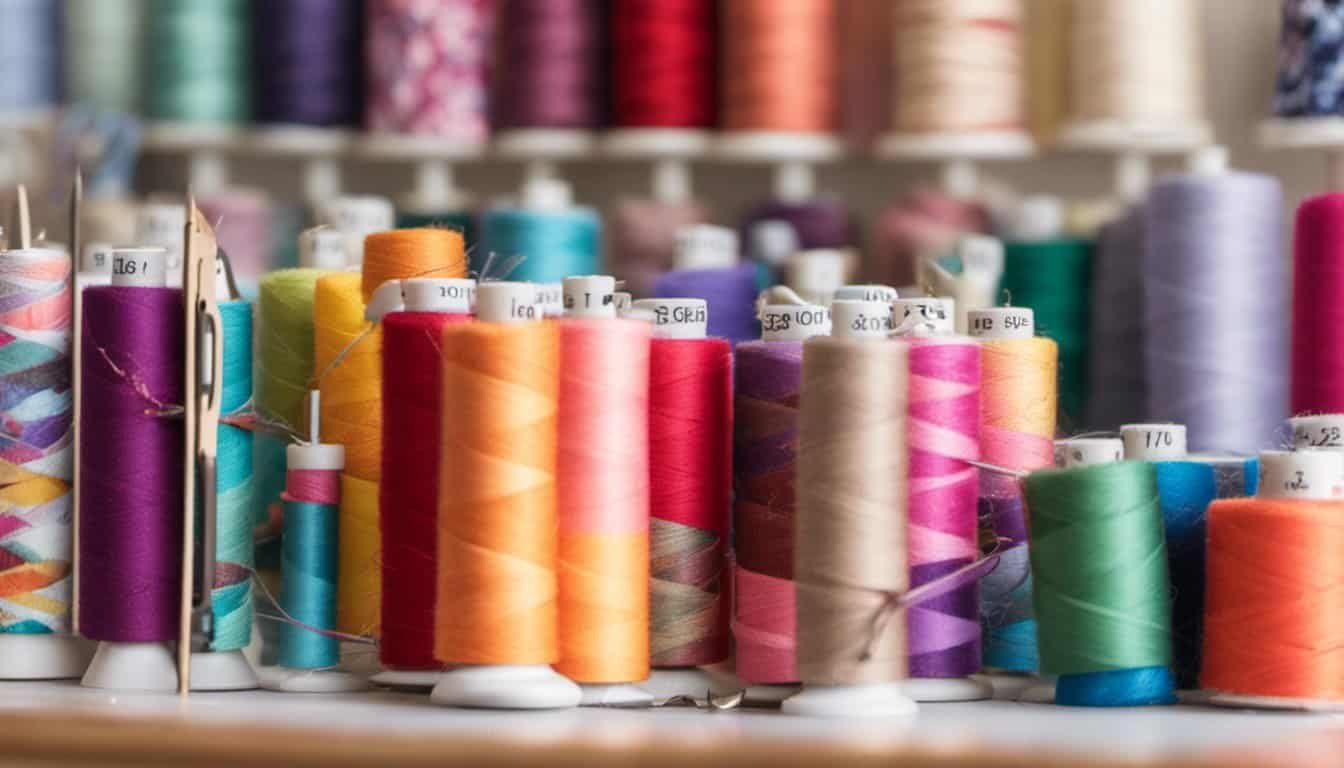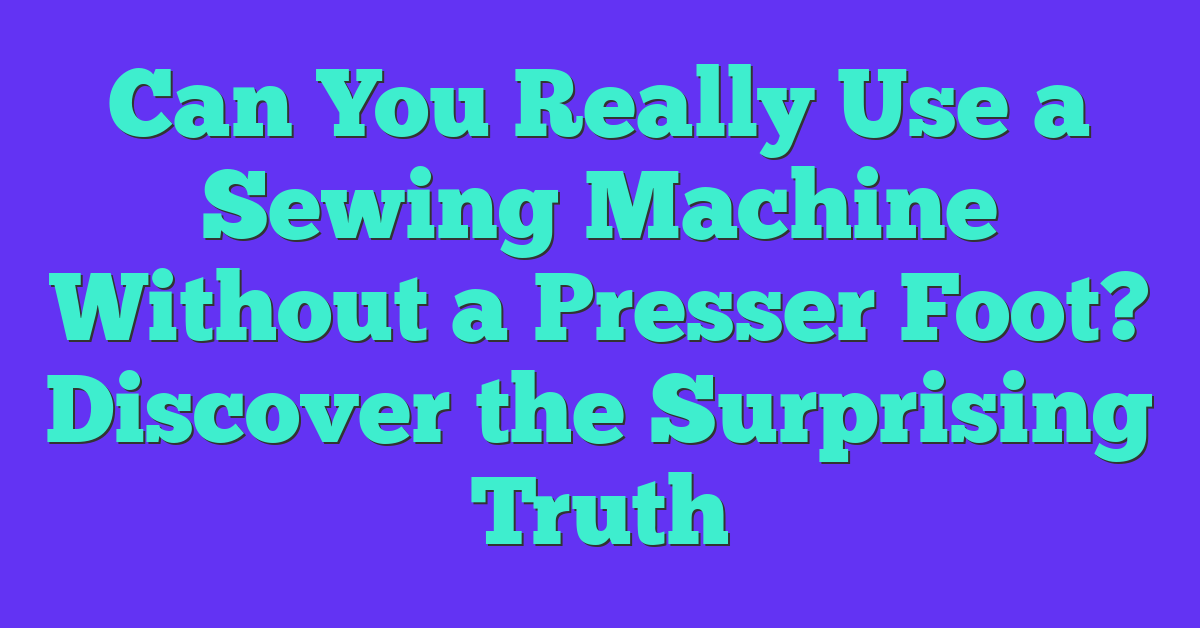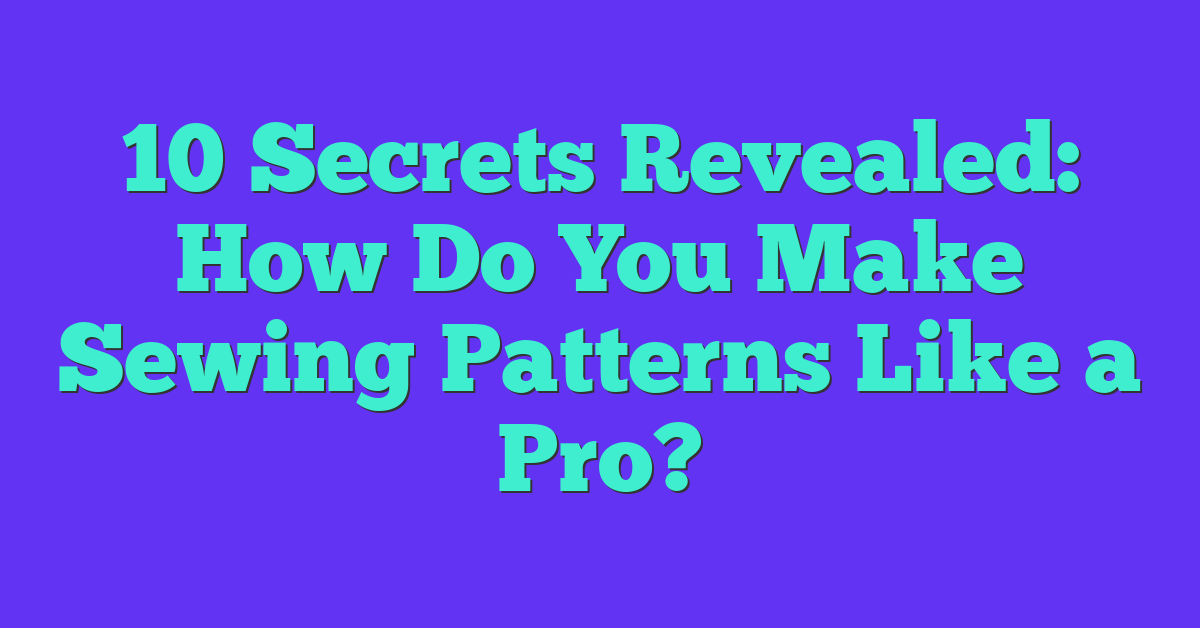Ever found yourself in the middle of a sewing project only to realize your presser foot is missing or broken? You might wonder if you can still use your sewing machine without it. The presser foot plays a crucial role in guiding fabric and ensuring even stitches, but is it absolutely necessary?
Understanding the Role of a Presser Foot
The presser foot is essential in most sewing projects. It stabilizes fabric and promotes even stitches.
What Is a Presser Foot?
A presser foot is an attachment for your sewing machine. It holds fabric flat as it passes through the machine. Various types of presser feet are available, each suited to specific stitches and fabrics. Some examples include the zipper foot, buttonhole foot, and walking foot.
How Does It Work in Sewing Machines?
A presser foot works in tandem with the feed dogs. It presses the fabric down while the feed dogs move it forward. This action ensures consistent stitch length and alignment. Without it, fabric may bunch up or slide, resulting in uneven or skipped stitches. For instance, when quilting, a walking foot helps guide multiple fabric layers evenly.
Exploring the Possibility: Using a Sewing Machine Without a Presser Foot
While the presser foot plays a crucial role in sewing, it is possible to explore sewing without it, but this path comes with various hurdles.
Risks and Challenges
Sewing without a presser foot introduces significant challenges. First, fabric stability suffers; without the presser foot holding it down, fabric can easily shift or bunch up. This movement leads to uneven stitches, which may look unprofessional. Additionally, since the feed dogs rely on the presser foot’s downward pressure to move fabric effectively, advancement might become inconsistent. This inconsistency results in skipped stitches and potential fabric damage.
Fabric layers, particularly in quilting, become difficult to manage. Without a presser foot, multiple layers may misalign. Fine fabrics like silk or lightweight cotton are prone to slippage, while thicker materials, such as denim, might not feed smoothly. Handling these issues requires careful manual pressure, increasing sewing difficulty and time.
Possible Types of Sewing Without a Presser Foot
Certain types of sewing make limited use of presser feet. For instance, free motion quilting and embroidery often use a darning foot or no presser foot at all. In free motion quilting, you manually guide the fabric, creating intricate designs; however, this technique demands practice and precision to maintain stitch quality.
Hand-sewing mimicking techniques, such as basting with long temporary stitches, can bypass the presser foot. These methods can stabilize fabric temporarily before final machine stitching, though they are not a complete substitute for using a presser foot.
Another scenario might involve emergency repairs. Should the presser foot break or become unavailable, you could finish a project by manually guiding the fabric. This method ensures completion but is not ideal for regular practice due to compromised stitch quality and fabric handling difficulties.
While sewing without a presser foot is possible, it’s challenging and less efficient. Practice, patience, and specific sewing techniques are essential to manage the associated risks.
Alternatives and Modifications to the Presser Foot
You don’t always need a presser foot to sew effectively. Several alternatives and modifications can make sewing without a presser foot easier and more efficient.
Using a Darning Plate
A darning plate is a valuable tool when sewing without a presser foot. It covers the feed dogs, allowing free movement of the fabric. Quilters often use darning plates for free motion quilting because they provide greater control over stitching direction. To use a darning plate, simply attach it over the feed dogs, set your machine to straight stitch, and guide the fabric manually. This method works well on lightweight fabrics and can be essential for creating intricate designs and custom stitches.
DIY Modifications
Creating DIY modifications can help in sewing without a presser foot. Some sewers use a rubber band to secure the fabric around the needle area, ensuring stability. Others craft custom plates from thin, flexible materials like plastic or metal sheets to replicate the functionality of missing components. You can experiment with different materials and techniques to find what works best for your specific sewing task. However, remember that DIY modifications may not provide the same level of control and consistency as a standard presser foot. Always test on scrap fabric first to avoid damaging your projects.

Tips for Sewing Without a Presser Foot
Sewing without a presser foot presents unique challenges, but it’s possible with the right techniques and adjustments.
Ideal Fabrics and Techniques
Selecting the right fabrics and techniques is crucial when sewing without a presser foot. Lightweight, stable fabrics like cotton or linen are easier to manage. Avoid slippery, stretchy, or heavy fabrics as they may shift or bunch up without the stability provided by a presser foot.
Hand-guided techniques work well for simple stitching tasks. Practice free-motion sewing to guide the fabric manually. Use your hands to gently hold and feed the fabric, maintaining an even pace to ensure consistent stitching.
Adjusting Machine Settings for Optimal Results
Adjusting your machine settings optimizes your sewing results without a presser foot. Reduce the thread tension slightly to prevent puckering. Set a shorter stitch length for better fabric control.
If your machine has adjustable feed dogs, lower or cover them with a darning plate to facilitate smooth fabric movement. Testing these settings on a fabric scrap ensures optimal performance before you start your actual project.
Conclusion
« 10 Secrets Revealed: How Do You Make Sewing Patterns Like a Pro?
Is Your Sewing Machine Needle Dull? Discover the Hidden Signs and Fixes Every Sewer Must Know »
Sewing without a presser foot is definitely possible, but it requires some extra care and adjustments. By choosing the right fabrics and tweaking your machine settings, you can still achieve good results. Remember to experiment on fabric scraps first to find what works best for you. While these methods can be handy, they might not offer the same precision as using a presser foot. So, proceed with caution and enjoy the creative process. Happy sewing!

















